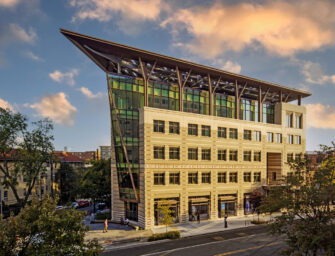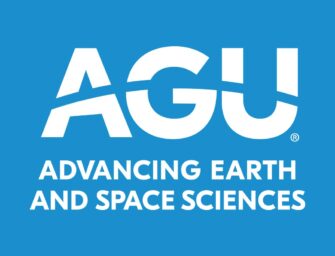AGU community provides recommendations and ideas for implementing climate change solutions to NSF
By AGU Organizing Committee
Several bills moving through Congress are likely to provide significant funding for expanding research and results in climate change solutions (CCS). Tackling the climate crisis is also a priority of the Biden-Harris Administration and emphasized in their proposed budget. If passed, the National Science Foundation (NSF) is expected to distribute and manage much of this funding through its grant processes. This would represent a tremendous opportunity for NSF, working in concert with other federal agencies, to spawn the innovations and applications that will help humanity respond to climate change.
In mid-April, in anticipation of this challenge, NSF contacted AGU and several other societies to rapidly convene our respective communities and provide robust input and innovative ideas on climate change solutions to help inform a potential implementation strategy.
Specifically, NSF asked the societies to address the following:
- Identify the biggest, more important interdisciplinary/convergent challenges in climate change that can be addressed in the next two to three years.
- Create two-year and three-year roadmaps to address the identified challenges. Indicate partnerships required to deliver on the promise.
- Provide ideas on the creation of an aggressive outreach/communications plan to inform the public and decision makers on the critical importance of geoscience.
- Identify information, training, and other resources needed to embed a culture of innovation, entrepreneurialism, and translational research in the geosciences.
Despite the short time frame requested for the work and report, the AGU community stepped up–council members, committee members, editors, other members, and early-career scientists, along with community leaders, urban planners and architects, business leaders, and NGO representatives submitted ideas, participated in workshops, and wrote and edited content, and AGU delivered a report to NSF by the 1 June deadline. Overall, about 125 key stakeholders participated in this effort (listed in the appendix to the report).
We are pleased to share this final report to NSF. Other reports were provided by the Geological Society of America, American Meteorological Society, and the Society for Industrial and Applied Mathematics, among others.
AGU’s report emphasized six guiding principles that emerged repeatedly from the diverse input, and a suite of innovative and integrative ideas, many of which included roadmaps for implementation that followed those principles. It is noteworthy that these principles are embedded throughout all the society reports. The guiding principles are:
- The importance of the Earth and space sciences in this effort.
- Build off of, leverage, and connect existing programs in and associated with the Geo Directorate and guidance, particularly Earth in Time.
- Incentivize and develop new partnerships broadly including across NSF, with other agencies, and externally; and with communities at all levels. This includes incentivizing co-creation of research and solutions with partners and communities.
- Promote and implement equity and climate justice holistically and intentionally.
- Develop skills for CCS and engagement across the Earth and space sciences community and broaden awareness of CCS overall.
- Lead a broader change in culture in the Earth and space sciences to support and realistically incentivize CCS.
All of the guiding principles are embedded throughout the integrative and innovative ideas and road maps; each of these also emphasizes the need for new transdisciplinary and convergent research and connections. Specific ideas included: a new trans-disciplinary office of climate solutions; a science corps and community engagement program; coordinated investments in major equipment, environmental monitoring, and data interoperability; regional centers for climate solutions; expanded graduate fellowships; and enhanced research to action in GeoHealth and in developing a better understanding of and resilience to high-impact events. These ideas are all stronger in concert. Collectively, these ideas, as well as those provided by other societies, would provide for significant advancements in climate change solutions in the short term, as well as continued results over decades.
The AGU cover letter to NSF summarized the main conclusions from this effort along these lines. In sum, this is a critically important opportunity for NSF and to contribute to the health of our planet and the well-being of humanity. This effort and large-scale engagement reflect the seriousness and importance of the climate crisis and the rapid need for innovative solutions. We are collectively encouraged and excited that NSF, through the support of Congress and the Administration, are focusing on this challenge. Thus, our single most important collective response is: Please embrace this challenge and opportunity fully. It is clear that through this effort, NSF has the opportunity to implement significant positive impacts in addressing climate change and lead the world in aligning and improving the practice of science with societal needs in the 21st century. The potential benefits to our society and our planet are monumental.
NSF will be hosting a Town Hall at #AGU21 as well as at the GSA Annual Meeting for further community input, and you can also provide feedback on AGU Connect. And you can also submit substantive ideas and references that expand on and add to those already included in the reports. We will collate and share this input regularly.
Pulling this all together in a very short amount of time was a significant team effort. A big thank you to everyone who contributed their input, time, and thinking.
AGU Organizing Committee:
Gordon Grant, President, AGU Earth and Planetary Surface Processes Section and Chair AGU New Frontiers Committee, College of Fellows
Julie Vano, President, AGU Science and Society Section
Brooks Hanson, Executive Vice President, Science, AGU
Raj Pandya, Sr. Director, Thriving Earth Exchange, AGU
Mark Shimamoto, Director, Global Outreach Programs, AGU
Laura Lyon, Executive Office, AGU



From the Education section:
This initiative seems ideally suited to AGU and to the ED section. Technology is pervasive in Earth science education in a way that is distinct from just students training to use measurement or sensor technologies.
We have an opportunity to explore educational technology in a unique way in the geosciences – 3 and 4-D visualizations, gigapan imagery, navigation and field-based technologies for data collection jump to mind. Also, we deploy unique technologies in the assessment of student learning, from the research tools of eye tracking, to use of VR goggles and platforms to classroom response systems data analysis. I have even used GPS to track not geologic features, but students moving across geologic features, so we have in our toolkit all the of the best technologies used to monitor and understand human learning and problem solving that builds on the best technologies used to measure and understand the Earth.
From the perspective of a Directorate of Science and Engineering Solutions, we can contribute human factors information that is unique to these proposed and experimental “solutions”. We are in a position to help address what works and why, using technological tools to understand the very much analog human mind, and to pass along insights to the advancement of more intelligent digital platforms, like machine learning and autonomous rover operations.
Our focus on the human aspects of technology as part of learning will provide critical insights into elevating the skills of the future work force, leveraging educational initiatives in the preK-20 spectrum, implementing climate solutions, and addressing complex scientific problems that cut across disciplines and domains. We support wholeheartedly these efforts, and encourage conversations with legislators and NSF leaders.